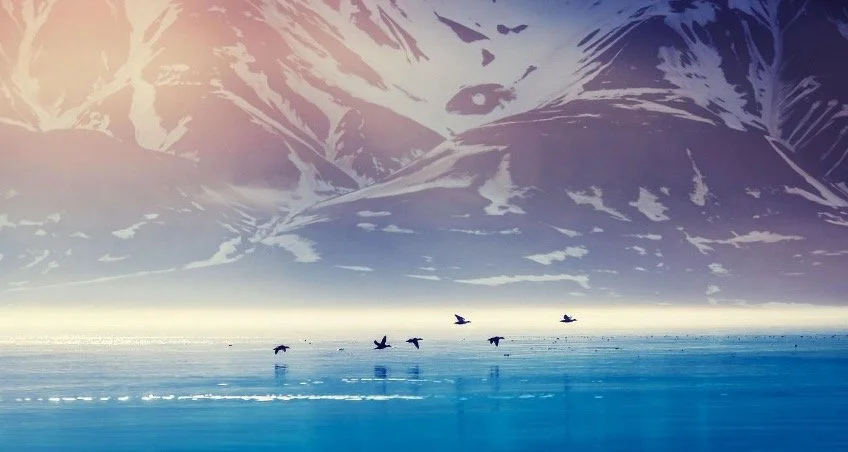The First Hope Spot in Iceland
By Safina Center Fellow Belén Garcia Ovide
A puffin in Iceland. While at sea, puffins spread out and live solitary lives. However, during the breeding season, they form large colonies. Photo curtesy of Belén Garcia Ovide.
We had been dreaming of this for years.
Years fighting, gathering information, studying, contacting experts, raising our voices and singing to the four winds that our coast, our wonderful and unique coast, deserved recognition commensurate with its value.
And finally, at the beginning of this year 2023, the dream came true.
Together, Ocean Missions NGO and the Húsavík Whale Museum, along with the support of other local organizations such as the Stefansson Arctic Institute and the University of Iceland’s Húsavík Research Centre, nominated the ocean area of Skjálfandi Bay, Eyjafjörður and Grímsey Island to become… ICELAND’S FIRST HOPE SPOT!
The first Hope Spot in Iceland. While 12% of land is protected in some way, less than 6% of the ocean is. Photo curtesy of Belén Garcia Ovide.
BUT… WHAT IS EXACTLY A HOPE SPOT?
Hope Spots are unique ocean areas that are recognized by the non-profit organization Mission Blue, which is led by the legendary oceanographer Dr. Sylvia Earle.
While about 12 percent of the land around the world is now under some form of protection (as national parks etc.), less than six percent of the ocean is protected in any way. Hope Spots allow us to plan for the future and look beyond current Marine Protected Areas (MPAs), which are like national parks on land where exploitative uses like fishing and deep sea mining are restricted. Hope Spots are often areas that need new protection, but they can also be existing MPAs where more action is needed. They can be large, they can be small, but they all provide hope due to:
Hope Spots are created around areas of special abundance, home to rare animals, of cultural importance, and more. Photo curtesy of Belén Garcia Ovide.
- A special abundance or diversity of species, unusual or representative species, habitats or ecosystems.
- Particular populations of rare, threatened or endemic species.
- A site with potential to reverse damage from negative human impacts.
- The presence of natural processes such as major migration corridors or spawning grounds.
- Significant historical, cultural or spiritual values.
- Particular economic importance to the community.
Collectively all of these Hope Spots will create a global wave of community support for ocean conservation that leaders and policymakers can’t ignore.
Currently there are more than 150 Hope Spots around the world. And The Northeast Icelandic Hope Spot is now one of them!
Blue dots indicate Hope Spots around the world. With this Iceland’s ideal sub-Arctic location allowing for large plankton blooms and supporting important kelp forests, valuable fish stocks, immense sea bird nesting cliffs, and thriving seal, porpoise, dolphin and whale populations, it is clear it deserves this very special recognition! Photo curtesy of Belén Garcia Ovide.
WHAT DO WE HAVE TO DO NOW?
The designation of the Northeast Iceland Hope Spot does not come with any binding agreements; it is simply shining an international spotlight on our area that is unique and deserves to be protected. It is up to all the communities in this area to decide how we should move forwards with the protection and sustainable use of our oceans.
Many Hope Spots around the globe are, or are striving to become, Marine Protected Areas. Currently less than 1% of Iceland’s marine spaces are protected, though Iceland has signed the UN agreement which aims to protect 30% of both land and ocean areas by 2030. The designation of this Hope Spot can be a stepping-stone towards stronger legal marine protection and sustainable use of Iceland’s ocean resources, preserving it’s natural wonders for future generations.
The designation of a Hope Spot can be a stepping stone toward stronger legal action. Less than 1% of Iceland’s marine spaces are protected. Photo curtesy of Belén Garcia Ovide.
TOWARDS LEGAL MARINE PROTECTION
From Iceland, we are creating a wave of action that is moving the locals and people from all over the world to pay attention to this marine spot. Every conversation, every encounter, every gentle gesture with nature, counts. We have created a special local organisation (Skjálfandi Marine Protection Group) aiming to engage, inform and educate the citizens and local governments about the importance of the creation of a Marine Protected Area.
In only one week we’ll embark again onboard Opal to sail for a week around Iceland and keep researching the health of our oceans to provide solid arguments about the need for ocean protection.
In early June, we will be officially launching the nomination of the Northeast Iceland Hope spot in at The Explorers Club World Oceans Week Festival that takes place in New York.
We are so excited!!
The schooner Opal takes people from all over the world sailing to teach them about Iceland’s unique marine life. Photo curtesy of Belén Garcia Ovide.
TRANSFORMING HOPE INTO ACTION
We live in a world of beauty where animals and plants have the same right of coexisting with us and live on this planet. Most of them have been existing here way longer than us, humans. In historical times, we “just arrived”. The lessons we can learn from nature are so valuable that we simply depend on them. We need to start a process of regeneration.
Regenerating ourselves as part of the natural world and regenerating our ecosystems in the way that we can coexist in peace and harmony with the animals. We should stop fighting against TIME and NATURE for growth but just let TIME and NATURE BE in control. Only by doing that will we find the cure to save our sick planet.
We have so much to learn from nature, if only we would just listen! Photo curtesy of Belén Garcia Ovide.







